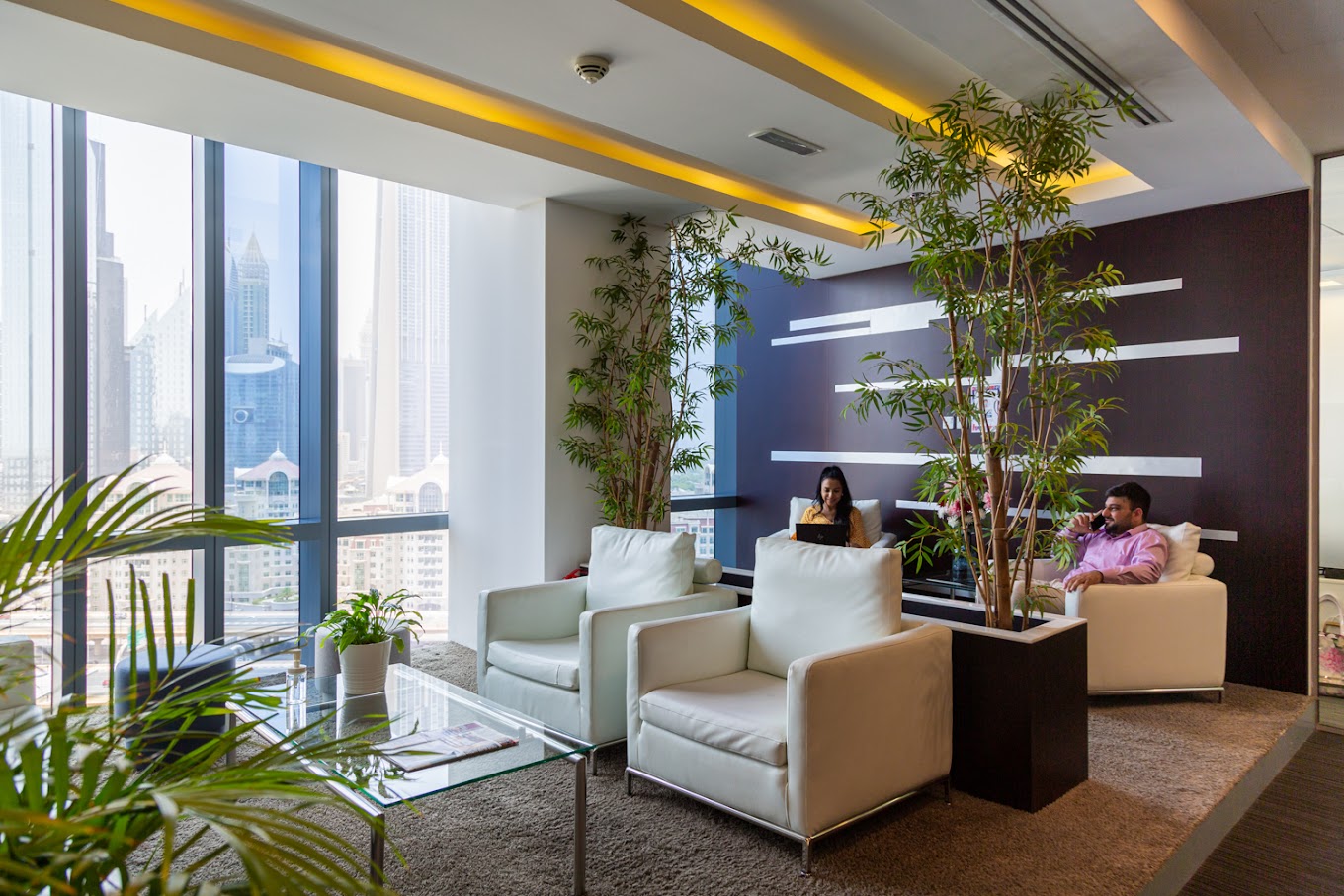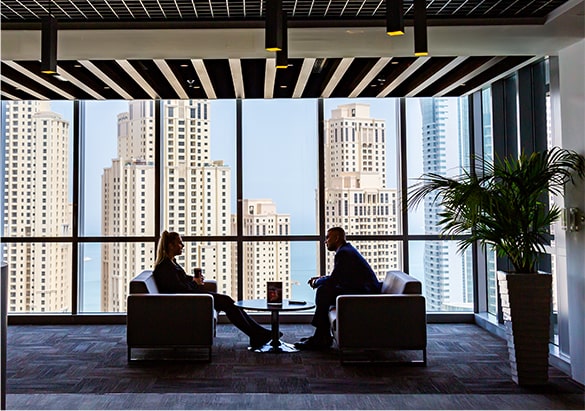Brainstorming is a powerful tool for generating creative solutions, boosting productivity, and tackling challenges from fresh perspectives. Whether you’re working on your own or collaborating with a team, finding the right brainstorming techniques can have a big impact on the quality and quantity of ideas.
If you’re in creative working spaces or meeting spaces in Dubai, you might have access to an environment designed to inspire innovative thinking. This article will explore 12 brainstorming techniques that can unlock your creativity and drive innovation.
It’s important to consider the different environments that can foster creativity. While virtual space offers flexibility and convenience, co-working spaces provide a physical environment designed to encourage collaboration and networking. Both options have their own advantages, and we’ll also touch on how these spaces can influence your brainstorming sessions.
1. Mind Mapping
Mind mapping is a popular brainstorming technique that visually organises thoughts and ideas. Starting with a central idea, branches are drawn to represent related thoughts or concepts.
This method encourages creativity by allowing you to explore various facets of a topic and uncover connections that may not have been immediately apparent.
When it comes to brainstorming, location is important—having the right environment for business, whether in a co-working space or a quiet meeting room, can help facilitate clarity and focus, making it easier to connect ideas and foster creative thinking.
A conducive setting supports an open and fluid exchange of ideas, which is crucial for effective mind mapping.
2. The SCAMPER Technique
SCAMPER is an acronym that stands for Substitute, Combine, Adapt, Modify, Put to another use, Eliminate, and Reverse.
This technique involves evaluating an existing product, service, or concept using these seven prompts to stimulate new ideas or improvements. It’s a fantastic method for improving and innovating upon current offerings.

3. Brainwriting
Brainwriting works like traditional brainstorming but with a twist. Instead of vocalising ideas, participants write them down on paper or digitally.
After a set period, each participant passes their paper to the next person, who then builds upon or adds to the idea. This promotes quieter voices being heard and generates a broader array of ideas.
4. Reverse Brainstorming
While traditional brainstorming focuses on finding solutions, reverse brainstorming flips the process on its head by asking, “How could we cause this problem?” or “What could make this situation worse?”
By identifying the negative elements, teams can uncover solutions and ideas that would not have been obvious in a typical brainstorming session.
This technique can also spark ideas to improve workplace culture, as it encourages team members to think creatively about overcoming challenges and creating a more positive, efficient environment.
5. Nominal Group Technique (NGT)
In the Nominal Group Technique, each participant first writes down their ideas individually. Then, each idea is presented to the group without discussion.
After all ideas are listed, participants vote on the most promising ideas. This technique ensures equal participation from all team members and minimises dominant voices influencing the outcome.
6. Starbursting
Starbursting is a questioning technique where participants ask as many questions as possible about a specific topic without immediately looking for answers.
The goal is to generate a wide range of questions that can then lead to new insights, angles, or solutions. This approach helps refine the scope of a problem before jumping to conclusions.
7. Role-Storming
Role-storming encourages participants to brainstorm ideas by imagining themselves in the role of someone else. For instance, you might ask participants to adopt the perspective of a famous personality, a customer, or a competitor.
This technique helps break down mental barriers and sparks creativity by thinking outside the personal context.
In cities like Dubai, where businesses often rely on PRO services to navigate legal and administrative processes, role-storming can also help in understanding the challenges and perspectives of local stakeholders.
8. Round-Robin Brainstorming
Round-robin brainstorming is a simple yet effective technique in which team members take turns contributing ideas in a structured, sequential manner.
Each person must provide an idea before any can be repeated or expanded upon. This method keeps the session organised and ensures that all participants contribute equally.
9. The 5 Whys
The 5 Whys technique helps get to the root cause of a problem by repeatedly asking, “Why?”
Each time an answer is provided, participants ask why that is the case. This iterative process uncovers deeper insights and can lead to more innovative and effective solutions.
10. Collaborative Brainstorming
Collaborative brainstorming is all about group synergy. By combining the collective skills, knowledge, and experiences of a team, participants can build upon each other’s ideas.
Whether done physically in a coworking space or virtually through digital tools, this collaborative approach maximises creativity and leads to diverse, unique ideas.
11. Fishbone Diagram
Also known as the Ishikawa diagram, this technique helps identify the root causes of a problem.
By drawing a central spine and adding “bones” that represent different potential causes, the team can visually map out issues. The fishbone diagram is useful for complex problems where multiple factors may contribute to the outcome.
12. 6-3-5 Brainwriting
6-3-5 brainwriting is a structured approach to brainwriting. Six participants each write down three ideas, and after five minutes, the paper is passed to the next person. This process continues until each participant has had the opportunity to build upon the ideas.
This technique generates numerous ideas in a short amount of time and promotes collaborative thinking. Whether in a co-working space or an office for rent in Dubai, such methods can thrive in an environment designed to foster collaboration and creativity.

Boost Your Team’s Productivity With New Brainstorming Techniques
Incorporating a variety of brainstorming techniques into your problem-solving process can significantly enhance creativity and productivity.
Whether you’re trying to develop a new product, solve a complex issue, or simply improve efficiency, understanding what are some brainstorming techniques that work best for your team is key to success.
A conducive environment plays a crucial role in fostering creativity, and the right working space can make all the difference. Whether in a collaborative coworking space or your own dedicated setting, the right atmosphere enhances focus, idea flow, and team dynamics, helping you unlock new perspectives and find innovative solutions faster than ever.
Frequently Asked Questions
What is the best method for onboarding?
The best method for onboarding depends on your company’s culture and the tools you use. However, a comprehensive process that includes clear communication, hands-on training, mentorship, and feedback sessions tends to yield the best results.
How can virtual spaces enhance brainstorming?
Virtual spaces can enhance brainstorming by offering flexible collaboration tools such as shared documents, virtual whiteboards, and real-time video discussions.
What is the main purpose of brainstorming?
The main purpose of brainstorming is to generate as many ideas as possible in a short period of time.
Which best describes the purpose of brainstorming?
Brainstorming serves the purpose of sparking creativity, fostering collaboration, and producing innovative solutions to problems.
How do co-working spaces support brainstorming?
Co-working spaces provide a dynamic and collaborative environment for brainstorming sessions. With access to diverse professionals, shared resources, and flexible workspaces, these spaces foster creativity and team interaction.
Can virtual spaces be as effective for brainstorming as physical spaces?
Yes, virtual spaces can be just as effective for brainstorming. Digital tools like video conferencing, collaborative whiteboards, and shared documents allow teams to brainstorm, share ideas, and collaborate in real time.

Leave a Reply